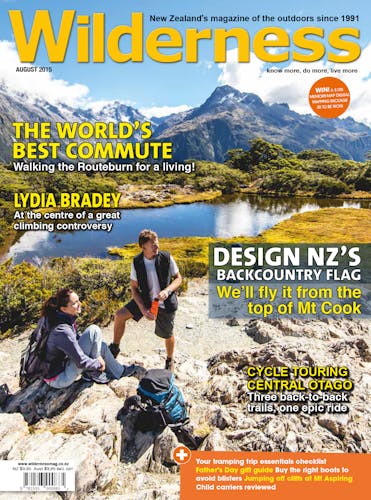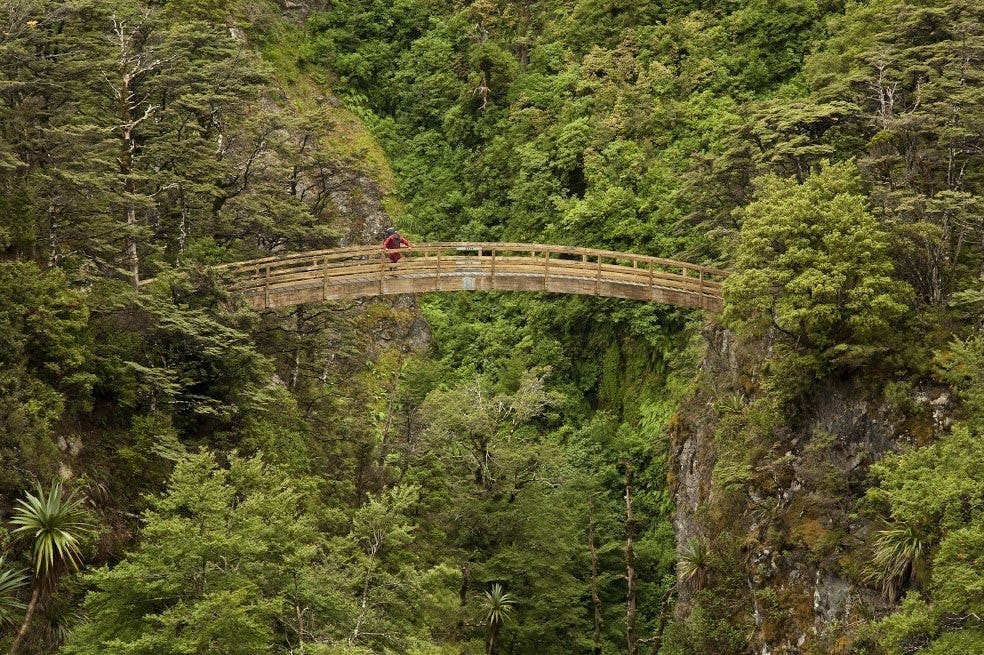Built to withstand the ages, arch bridges have found their way from classical Greece to backcountry New Zealand
It’s not often anyone describes a backcountry bridge as elegant, but a few do meet this criteria – notably these three backcountry arch bridges.
The arch is a beautiful, classical shape for a bridge, and humans have been building arch bridges for millennia. Before people had materials for more sophisticated bridges, they could use the arch construction, as it suited readily available materials like stone or brick. Arch bridges work because they transfer much of the weight of the materials to the horizontal, not vertical, plane; meaning the abutments on either bank support most of the weight. Simple, but ingenious. One stone arch bridge dating from 1300 BC exists in Greece, and locals still use it. The Romans were pretty good at building them too, and mastered construction of multiple arch bridges across larger spans. A stunning one, built by the Romans at Alcántara between 104 and 106 AD, still exists in Spain.
While obviously more modest in scale, these three bridges use the same basic arch principle. While the tracks that cross them lead further into the backcountry, these bridges make worthy destinations in their own right. All three lie no more than two hours from the nearest road-end.
Rangiwahia Track, Ruahine Forest Park
Located on the track to Rangiwahia Hut, this is the most spectacularly sited of the three bridges mentioned here. DOC has completed some fabulous work on the track in recent years, re-routing it around a problematic slip that had destroyed a large section of the original benched trail. One of the advantages of this re-routed track is a magnificent viewpoint of the arch bridge, which spans a narrow gorge in a tributary of the Mangawharariki Stream. Helen Clark opened it in the 1980s, when she was Minister of Conservation.
Oroua Valley Track, Ruahine Forest Park
A sister to the Rangiwahia arch bridge is one spanning the Umutoi Stream, a tributary of the Oroua River. Logging occurred in the valley during the mid-20th century, and a bridge suitable for trucks used to span the Umutoi Stream. By the 1960s, however, logging had ceased and the bridge was – in good Kiwi fashion – blown up. As the area was attracting trampers and hunters, a footbridge was needed, so Territorial Army soldiers built a new arch bridge. Opened in December 1961, the bridge has been serving well since then. Beyond the bridge, the track leads to the Oroua Valley, Alice Nash Memorial Heritage Lodge and Iron Gates Hut.
Turere Stream, Rimutaka Forest Park
The Orongorongo Track is one of the most popular in the country, leading, as it does, into a valley full of huts. Beginning from the Catchpool parking area, the track takes about two hours to end where the Turere Stream merges into the Orongorongo River. Here, an arch bridge spans the Turere, ensuring access to huts up-valley on the Big Bend Track. The bridge offers good views of the valley, especially the northern rata that tower over the canopy. Nearby is a camping area and toilets.








